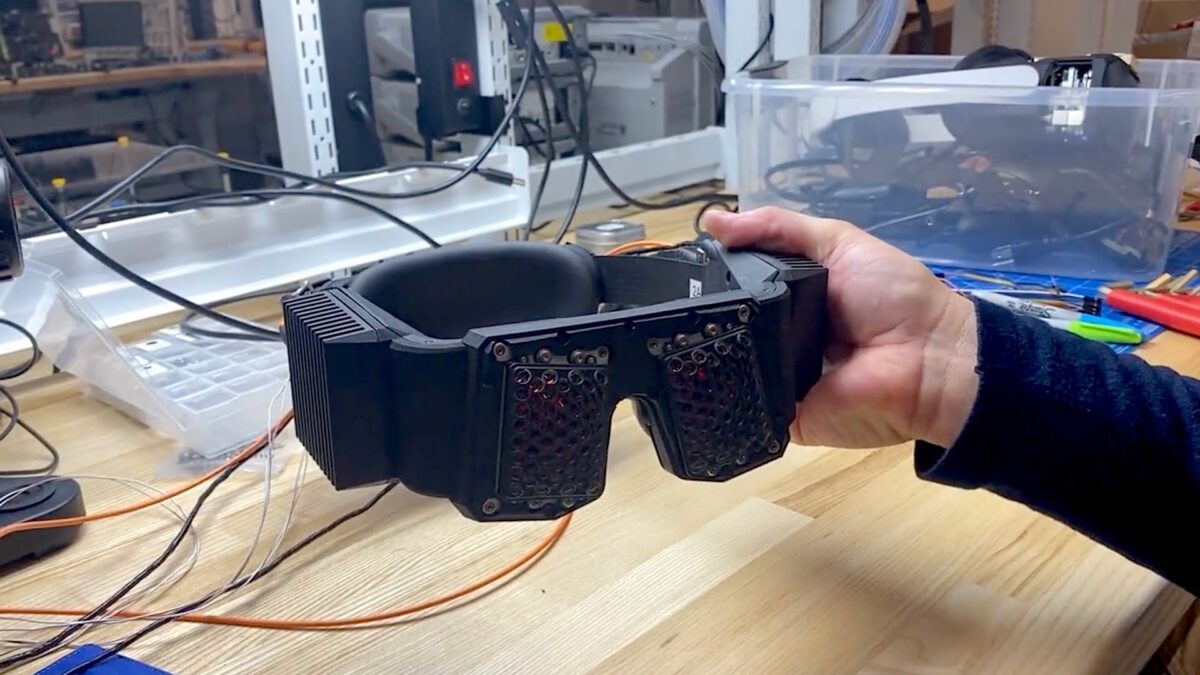Meta's Flamera headset prototype is impressively thin

In a new video of Meta's prototype headset Flamera, a researcher demonstrates how flat and thin the device really is.
Meta introduced two new research prototypes this week: Butterscotch Varifocal and Flamera. The devices will be on display at the SIGGRAPH conference in Los Angeles next week. The headsets are intended as proofs of concept, and Meta says it's completely open whether these technologies will one day make it into products.
While Butterscotch Varifocal combines a retinal and a varifocal display for the first time, Flamera focuses on something else: The prototype demonstrates a new technical approach to perspective-correct and distortion-free passthrough. With the advent of advanced mixed reality headsets, a natural representation of the physical environment is becoming increasingly important.
What is Flamera?
A fundamental problem with passthrough is that the camera sensors are always located somewhere other than the eyes of the headset user, resulting in a different than natural viewing perspective.
Meta's new approach to solving this problem is called Light Field Passthrough. At the heart of this technology is a flat camera ("Flamera"), which, through an aperture, is fed only with the rays of light that are necessary for a computational synthesis of the natural point of view.
This results in higher image quality and lower latency than previous passthrough approaches. For more details on this technology, including an explanatory video, check out Jan's Flamera article.
Video shows Flamera from new perspectives
Research scientist Nathan Matsuda published a video of Flamera that shows the headset from new perspectives. Around the eyes, the prototype is surprisingly flat and thin, even though it contains displays and cameras.
@nathanmatsuda just shared a behind-the-scenes clip of our upcoming Flamera demo at #SIGGRAPH2023. This gives a better view of how thin the headset is, including both the display system and the new light-field camera module. pic.twitter.com/Wv7o0eCXSn
— Douglas Lanman (@douglaslanman) August 2, 2023
The thinness of the prototype is crucial because Flamera's technology works better the closer the sensors are placed to the eyes. The research team achieved a distance of 35 millimeters between the eyes and the two camera modules. To achieve this, a large part of the electronics had to be relocated to the flexes, as can be seen clearly in the video.
Watching this video, I thought that the flatness and thinness of the Flamera technology might make it compatible with Meta's Mirror Lake, an ambitious headset concept that Meta is working toward.
“Our light field passthrough demo gives you a preview of what MR passthrough might one day become, if we can fully refine the light field camera hardware driving this prototype," says Display Systems Research Director Douglan Lanman in the Meta Quest blog. "It points a path forward for perspective-correct passthrough that may seem ‘wacky’ today but could very well prove practical to meet the user experience and form factor challenges of tomorrow’s MR headsets.”
We should learn more about Flamera next week when SIGGRAPH attendees can try out the headset.
Note: Links to online stores in articles can be so-called affiliate links. If you buy through this link, MIXED receives a commission from the provider. For you the price does not change.